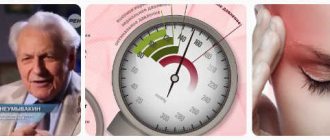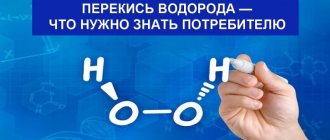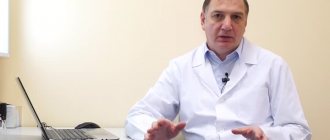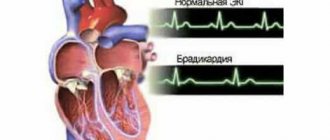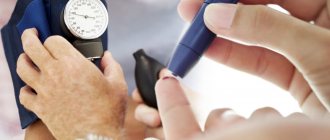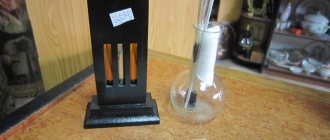Hypertension is one of the most serious diseases of the cardiovascular system, which does not allow the patient to lead an active lifestyle. But completely refusing physical activity only worsens the situation. Especially for people suffering from high blood pressure, Dr. Bubnovsky offers a complex of therapeutic exercises.
This article provides information about the importance of physical activity for treatment, talks about the essence of Dr. Bubnovsky’s complex and its positive effect on the patient’s body, as well as the types and forms of training.
Specifics of pathology and the importance of physical activity
Hypertension is a specific vascular pathology in which excessive activity leads to the development of a crisis and serious consequences. To stabilize the patient’s condition and prevent complications, doctors recommend moderate physical activity.
Concept of GB
With constant exercise under the supervision of a physician, hypertensive patients experience favorable changes in the dynamics of the heart. Due to oxygen saturation, the likelihood of stress and, accordingly, exacerbation of the disease is reduced.
Even a regular walk for an hour promotes the production of special hormones aimed at regulating the functioning of the circulatory system and improves the body's endurance. Over time, the patient notes a decrease in the level of fatigue.
Is exercise therapy necessary for a hernia?
Exercise therapy for a hernia is mandatory. The goal of such therapeutic exercises is to improve the patient’s physical condition, remove pain, and prevent its occurrence. Well-designed lessons:
- stimulate vital functions;
- increase the endurance of muscle structures and the reactivity of the body (the ability to respond to various factors);
- involve mechanisms that are involved in the pathological process in the general reaction, which contributes to their elimination.
Therapeutic exercise does not harm the body, since the exercises are designed to reduce the load on the spine. They not only relieve pain, but also “teach” the body to avoid injury in the future.
Regular exercise therapy helps:
- Relieve pain and speed up the healing process.
- Form correct posture.
- Improve strength, endurance, coordination.
- Evenly distribute the load across the parts of the spinal column.
- Restore mobility.
- Prepare the body for strength and aerobic exercise.
Therapeutic exercises strengthen the muscles that support the spine and prevent the appearance of new hernias. Exercises involve not only the back, but also the abdominal muscles. The body begins to move better, stiffness disappears, and the risk of injury decreases.
The essence of the method and indications
Exercises for hypertension according to Bubnovsky are prescribed to reduce blood pressure, eliminate vasospasm, and are indicated for patients at different stages of the disease. The development of the complex is based on the use of all internal forces of the body.
Advantages of the method:
Availability. Classes do not require a specific time, the purchase of various equipment, or a special place. Do the exercises at home at a convenient time.- Combination. Complements drug therapy, enhances the effect of treatment, and sometimes can replace the medicinal method.
- Productivity. After the first exercises, the patient notices an improvement in well-being, the exercises strengthen the immune system and get rid of lethargy.
- Versatility. Suitable for anyone, regardless of skill level.
There are different workouts for different degrees of the disease:
- breathing exercises;
- gentle exercises;
- aerobics;
- regular workout.
Depending on the degree of the disease, two types of exercises are distinguished:
- Dynamic, designed to normalize pressure.
- Isometric, involve the use of special devices.
Important! To choose the type of training, you need to consult a doctor, who will also select the individual intensity and number of repetitions of each exercise.
It is advisable to periodically measure the pressure and note it in a specially kept notebook. If there are signs of deterioration, stop training.
When performing exercises, you must adhere to the general rules:
- exercise on an empty stomach, before meals, since with a full stomach the effectiveness of the workout will be insignificant;
- The lesson time is set from 10-15 minutes with a gradual increase in duration;
- do not exercise when you are weak, overpowering yourself, such actions can cause even more harm;
- focus your efforts not on the number of approaches, but on the correct execution technique, since there is no benefit from incorrect repeated training;
- do not quit classes after the first signs of improvement appear;
- After finishing the workout, be sure to take a shower and drink water or mint tea.
To achieve lasting results, you need to review your diet, give up unhealthy foods, and follow a daily routine.
In what cases is it prohibited to do exercise therapy for a hernia?
Any physical exercise is prohibited during the acute phase of pain. If deterioration occurs, go to the clinic and undergo a course of drug therapy. And only when the pain goes away, with the doctor’s permission, you can start training.
Each type of intervertebral hernia has serious complications, so you should not delay treatment.
See how easy it is to get rid of a hernia in 10 sessions
Other contraindications:
- Hypertension.
- Serious heart diseases - ischemia, chronic failure, etc.
- Recent surgery, after which you should not strain (temporary contraindication).
- Heat.
- Colds, flu and other infectious diseases.
- Bleeding – incl. nasal
Set of training exercises
The complex includes exercises for all parts of the body: walking, push-ups, abs, squeezing the ball, arching
Gymnastics stages:
- The training begins with walking, changing the method of movement every five steps: on the heels, on the toes, step by step, step with legs crossed. Breathing is kept at the same level without changing the pace.
- Tilts. To perform the exercise, you need to bend over, lowering your hands at the level of your heels. At the same time, you should not tilt your head too much in order to avoid dizziness.
They make a “bicycle” for the legs. The patient, sitting on a chair, rests on the seat, then raises his legs and makes movements as when riding a bicycle. Repeat the exercise at least five times, taking breaks for a couple of seconds.- For the shoulders. Sitting on a chair, raise your shoulders and make circular movements with them. Repeat up to 5 times.
- Next is a lifting exercise. Sitting on a chair, spread your legs, exhale and rise up together with the exhalation. When inhaling, you need to sit on a chair.
- Body turns are performed while standing. Place your feet shoulder-width apart, then, moving your arms away, turn in different directions, inhaling at the same time. As you exhale, return to the starting position.
Finish each workout with a cool-down to relax and restore breathing. In a lying position, while taking a deep breath, bend the spine as much as possible, but at the same time keeping the head and tailbone in place. When exhaling, lower the spine to the floor. Movements should be slow and measured.
This breathing exercise is useful for the neck, as it maintains mobility for a long time and relieves pain, including headaches.
Doctor's story
Sergey Mikhailovich comes from the Tyumen region.
While serving in the military, he was involved in a terrible car accident that left him with numerous injuries. He was in a coma for a little over a week, and after emerging from it he became a second-degree disabled person. Then he began to look for ways to get rid of pain and methods that could help him continue to live a full life.
Bubnovsky entered medical school. Having become interested in alternative medicine, he developed his own exercise system. After numerous efforts, Sergei Mikhailovich removed the crutch and began to live an ordinary life. Now people with different situations and illnesses turn to the professor for help. Many patients with joint and spine problems highly praise their teacher.
The system that the doctor offers is safe and suitable for different groups of people. Recommended for pregnant women, the elderly, athletes and children. Convinced that medications do not help restore the bone and musculoskeletal system, he encourages people to engage in therapeutic exercises. This is the only way to restore your health and feel much better, says the doctor.
Gentle forms of training
Gentle gymnastics is one of the most difficult forms of training, since all exercises are performed while standing.
Includes:
- Step forward. You need to step forward, raising your hands up, take a deep breath. As you exhale, take a step back.
- Emphasis on the wall. Place your hands against the wall, lean forward, and lift your legs one by one.
- Swing your legs. Place your feet shoulder-width apart, hands on your waist, lift your leg up and move it back.
- Walking with raised arms.
At the end of the complex, a relaxation cool-down is performed, aimed at equalizing the heart rate and relaxation. With regular exercise, it prevents the development of the disease.
FAQ
Will exercise therapy help you recover faster after a hernia removal?
Yes, it will help. The main thing is to strictly follow all the doctor’s advice, do not rush, and do not increase the load ahead of time.
Is it possible to do exercise therapy for Schmorl's hernia?
Yes. Exercise therapy can be done for any type of hernia, when the acute pain subsides. The main thing is to choose the right set of exercises. If you have a Schmorl's hernia, you definitely need to pump up and strengthen the muscles, especially the back and abdomen. It is important to remember: weight bearing is contraindicated.
Is it possible to do exercise therapy for a sequestered hernia?
It is possible, but we must proceed from the fact that exercise therapy cannot be done during the acute phase. When the pain subsides, light exercise is allowed after consulting a doctor. Water gymnastics gives a good effect.
Themes
Intervertebral hernia, Spine, Pain, Treatment without surgery Date of publication: 11/12/2020 Date of update: 03/16/2021
Reader rating
Rating: 5 / 5 (3)
Breathing exercises
Breathing exercises are performed to enrich the circulatory system with oxygen, normalize tone, and accelerate metabolic processes.
This gymnastics includes the following exercises:
- In a lying position, place your hands on your chest and exhale. The lips are compressed.
- Hold your hands above your head, take a deep breath, and as you exhale, lower your body.
- Perform short inhalations and exhalations for half a minute.
The benefits of breathing exercises
Gymnastics has no side effects, but to get the first results you need to do it for at least about three weeks, gradually increasing the duration. The first lesson lasts no more than 10 minutes.
Exercise therapy after hernia removal
To recover normally after removal of a spinal hernia, you cannot do without physical therapy. Rehabilitation takes place in several stages:
- The first two weeks after surgery. The patient stays in the hospital, must wear a corset, and undergo medication treatment. You can get up for 2-3 days, sitting is not recommended. It is forbidden to lift weights exceeding 3-5 kg, and you cannot do massage.
- 2-6 weeks. The patient is discharged from the hospital. He must go to the clinic for physiotherapeutic procedures. You can't sit or stand for a long time yet. Weight no more than 8 kg.
- 1.5-2 months after operation. The attending physician prescribes exercise therapy and massage.
- 2-6 months The doctor allows you to increase the load when performing exercise therapy. Lifting weights and overworking is still not an option.
- After 6 months You need to take a course of exercise therapy on special simulators.
Thus, after the operation, the patient is almost motionless for the first two weeks. During this time, the muscles weaken and slightly atrophy. Your doctor will tell you when to start therapeutic exercises. Typically, exercise therapy is prescribed from 6 weeks after surgery. Activities at this time are the same as during the treatment of a hernia, depending on the location of the protrusion. But you can increase the load only by the doctor’s decision.
Read about all methods of treating hernias in our article “Treatment of intervertebral hernia.”
When you can’t do exercises after removal
After removal of a hernia, exercise therapy must be prescribed by a doctor, and the patient must strictly follow his instructions.
For the first time after surgery, you need to wear a corset, which helps the sutures heal. At this time, any loads are prohibited. Weights up to 5 kg can only be lifted with a corset. Active exercises are prohibited, incl. sharp twisting movements.
2 weeks after the operation, the patient is discharged from the hospital, but at this time exercise therapy is still prohibited. Only after at least 1.5 months. (at this point the stitches are tightened) and after examination by a doctor, you can start doing exercises.
Best exercises
The doctor prescribes exercise therapy based on the clinical picture. Classes are only possible under the supervision of a specialist. The main efforts are aimed at strengthening muscle mass and restoring the functioning of the operated part of the spine. If the patient’s condition allows, he is recommended to perform “Half-Cobra”, “Cobra”, “Cat”, turns and tilts of the head, then move on to more complex gymnastics.
6 months after the operation, the rehabilitation specialist prescribes work on simulators. If necessary, the patient undergoes tests, based on which the computer develops an exercise program. The patient is engaged in computerized installations that:
- test the patient’s condition during classes, which allows timely adjustment of the program;
- measure and calculate the patient’s muscle strength and range of motion;
- control the activity, excluding the possibility of injury to the spinal column.
The first exercise therapy sessions after surgery should only be carried out under the supervision of a doctor.
When the main rehabilitation is over, the patient needs to go to group classes in therapeutic exercises. If this is not possible, he can do the exercises at home, taking into account the recommendations of a rehabilitation specialist and exercise therapy instructor.
We use non-surgical hernia treatment techniques
Read more about our unique technique
Precautionary measures
Like any other method of treatment, Bubnovsky’s physical exercises have a number of contraindications. It is not recommended to perform the proposed complexes in the following cases:
- the patient has severe symptoms of tachycardia;
- insufficient myocardial function was diagnosed;
- the patient has extreme hypertension;
- women are advised to refrain from exercise during menstruation;
- pregnant women can perform exercises only after additional consultation with a doctor and with minimal load;
- It is strictly forbidden to engage in physical exercise during a hypertensive crisis.
Before starting training, it is imperative to undergo a comprehensive examination of the body, take tests and seek advice from a specialist. Only a doctor can say whether the suggested exercises can be performed.
Do not neglect the listed contraindications. Despite its apparent simplicity, the exercises have a strong therapeutic effect. If performed incorrectly, they can harm or worsen pathological conditions in the body.
